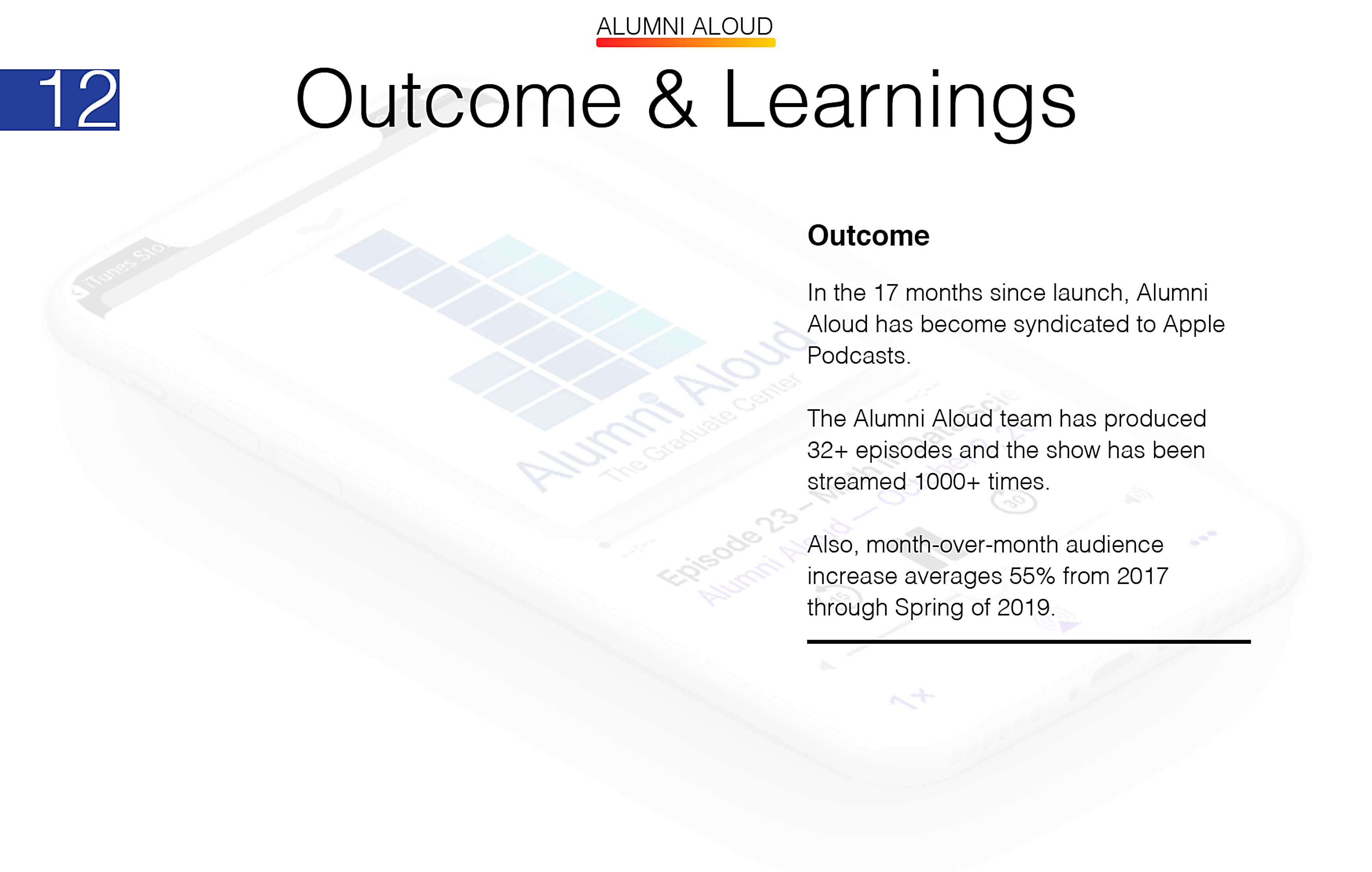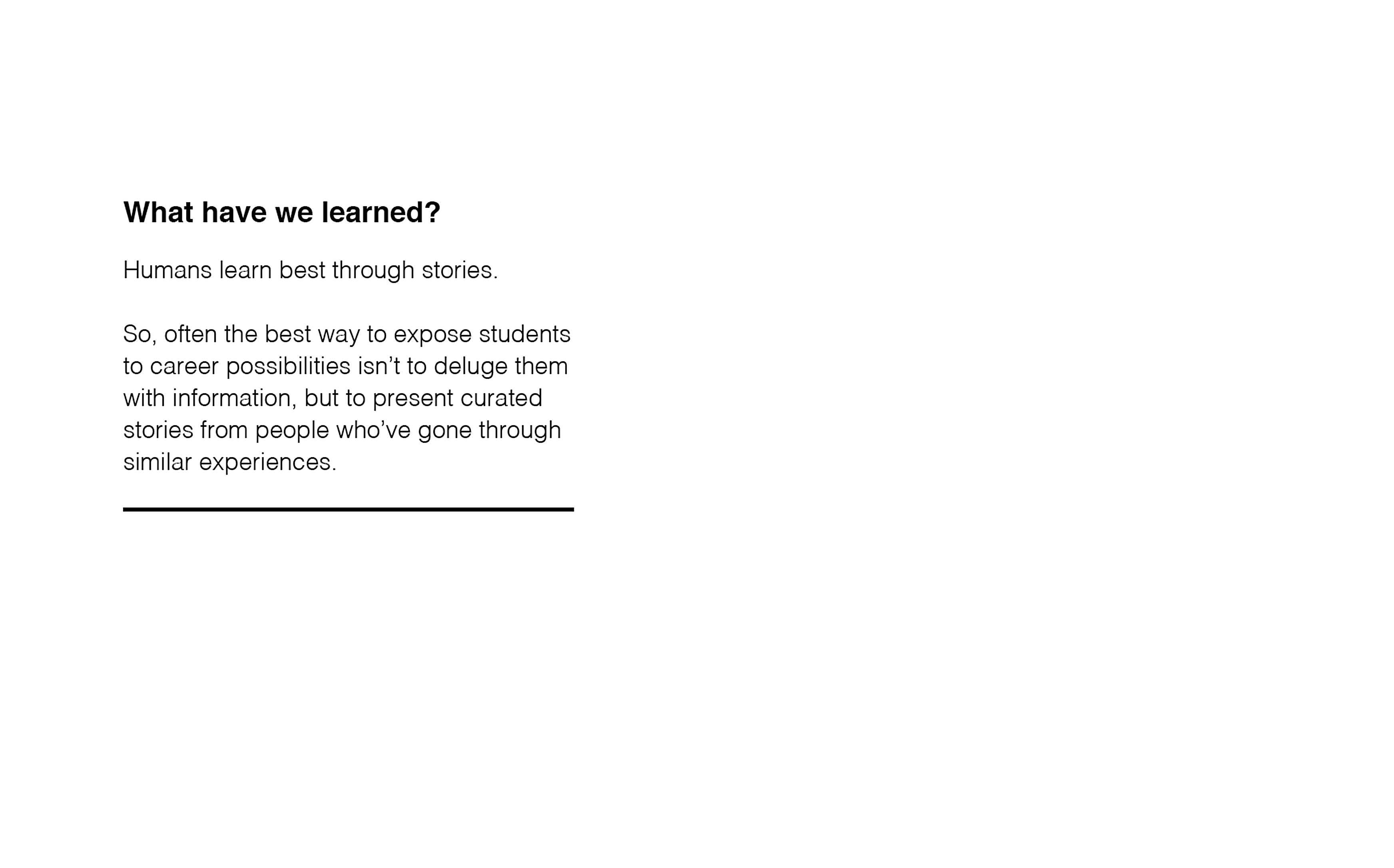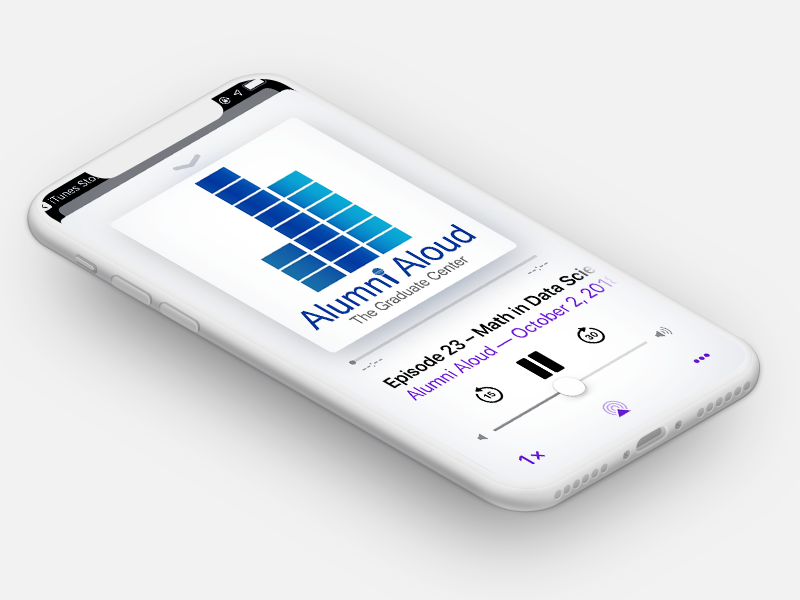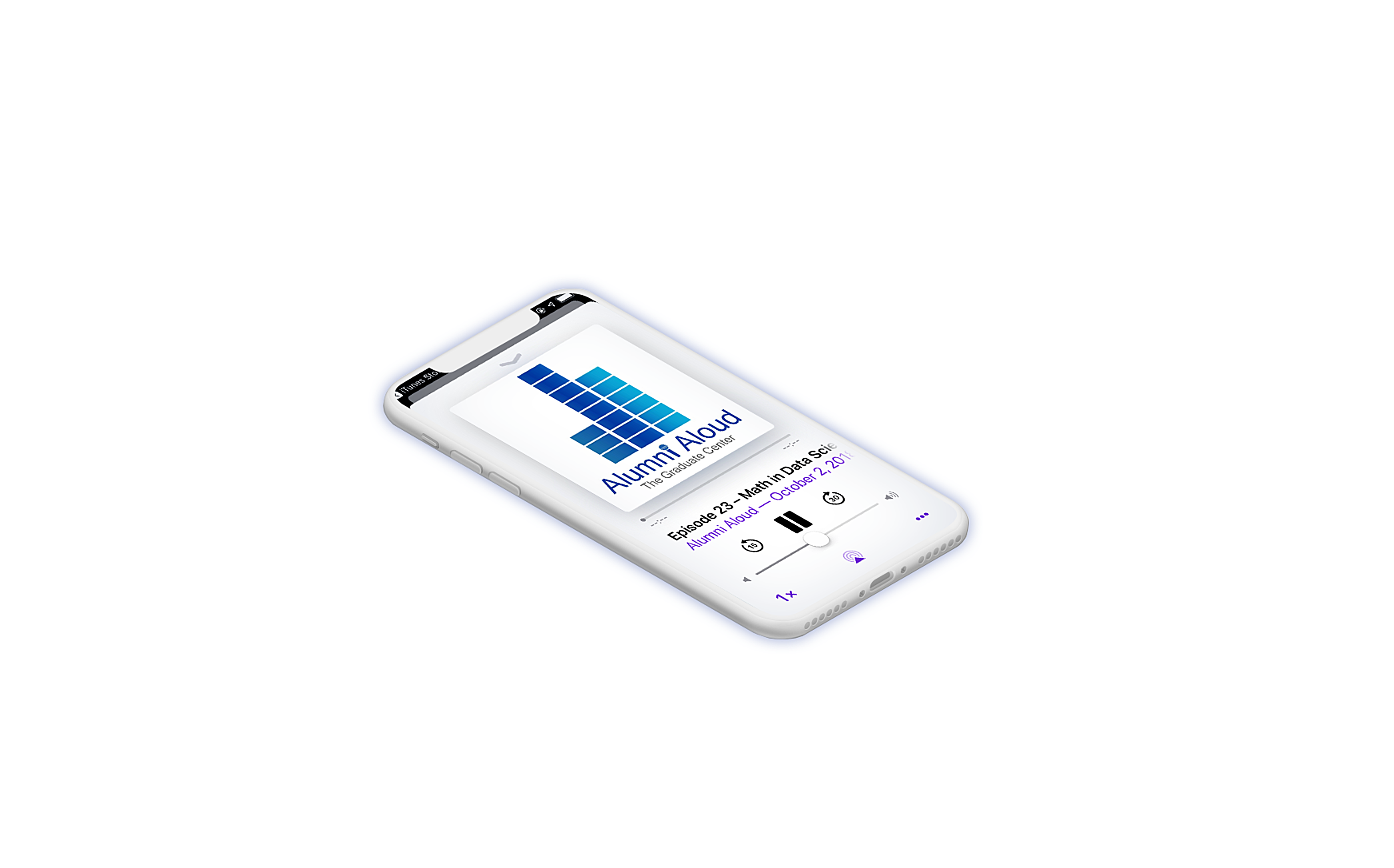



There were 5,891 humanities PhDs awarded in 2015, the highest number ever recorded. Yet academic hiring for humanities PhDs has been declining since the 1980s.
Despite this, PhD programs continue to prepare students for tenure-track academic jobs - jobs that simply aren’t there.
How might we teach students about careers that make use of their skills and talents outside academia in ways that imbue them with confidence and a sense of optimism about the future? And how can we leverage these perspectives on professional development to help build a culture of innovation and public engagement among PhD students by giving them a platform to share their stories?
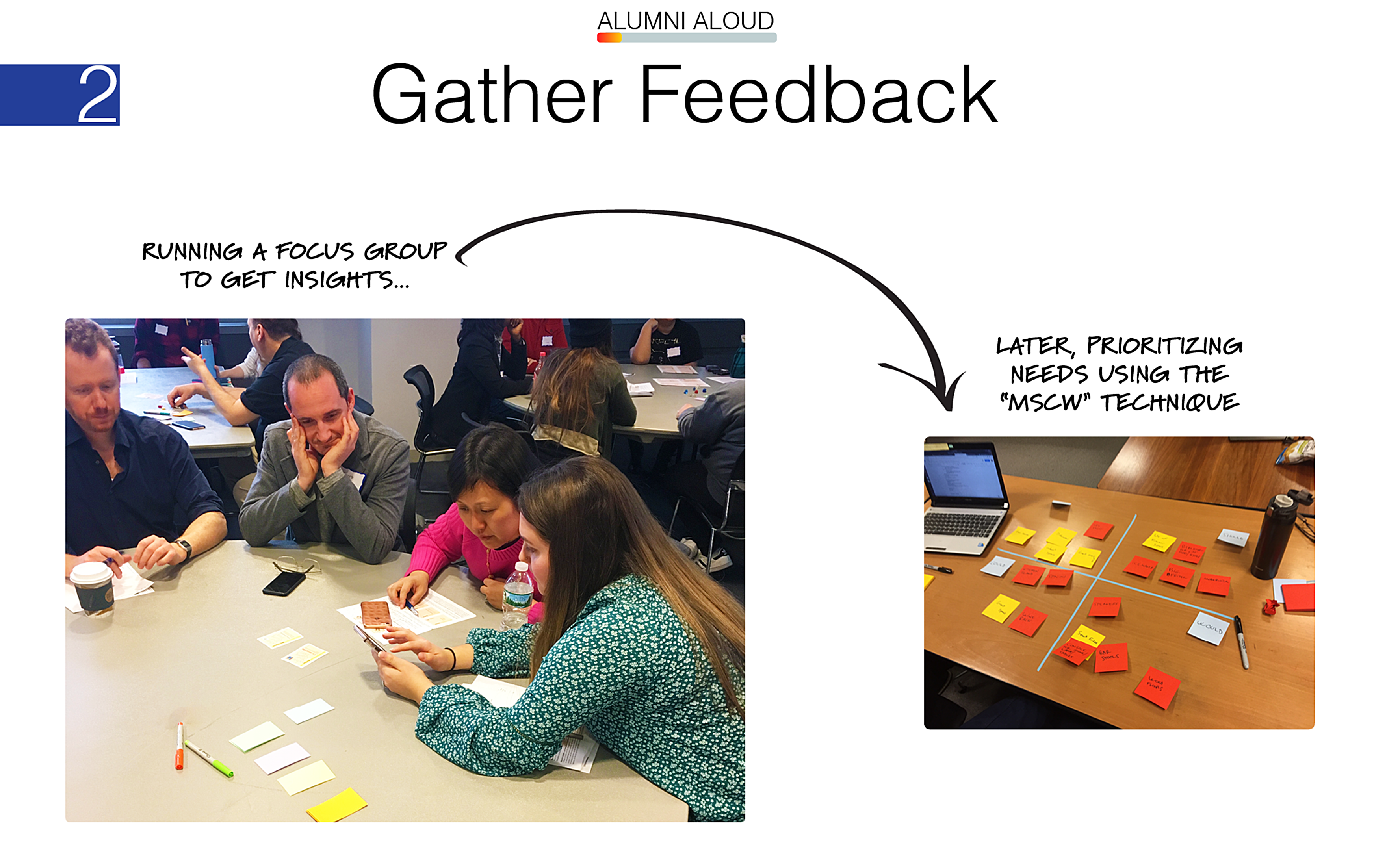
In Fall of 2016, I ran a focus group with GC faculty, staff, and students to find out how we could better assist students in discovering careers beyond academia.
Next, I prioritized feedback from the focus group participants using the "MSCW" technique. This involved listing participants' thoughts, feelings, and recommendations into four categories of urgency: Must, Should, Could, and Would. The point was to scope our deliverable towards what would make the biggest impact for the largest number of people.
Based on feedback from the focus group, I pinpointed two key challenges: improving students' access to alumni and strengthening the university's institutional memory about its graduates. I discovered that many students were branching out beyond academia, but after these students left the GC it was hard for current students to know about their journeys. Plain and simple, many students felt unprepared and unaware of how applicable their skillsets could be outside of the university.
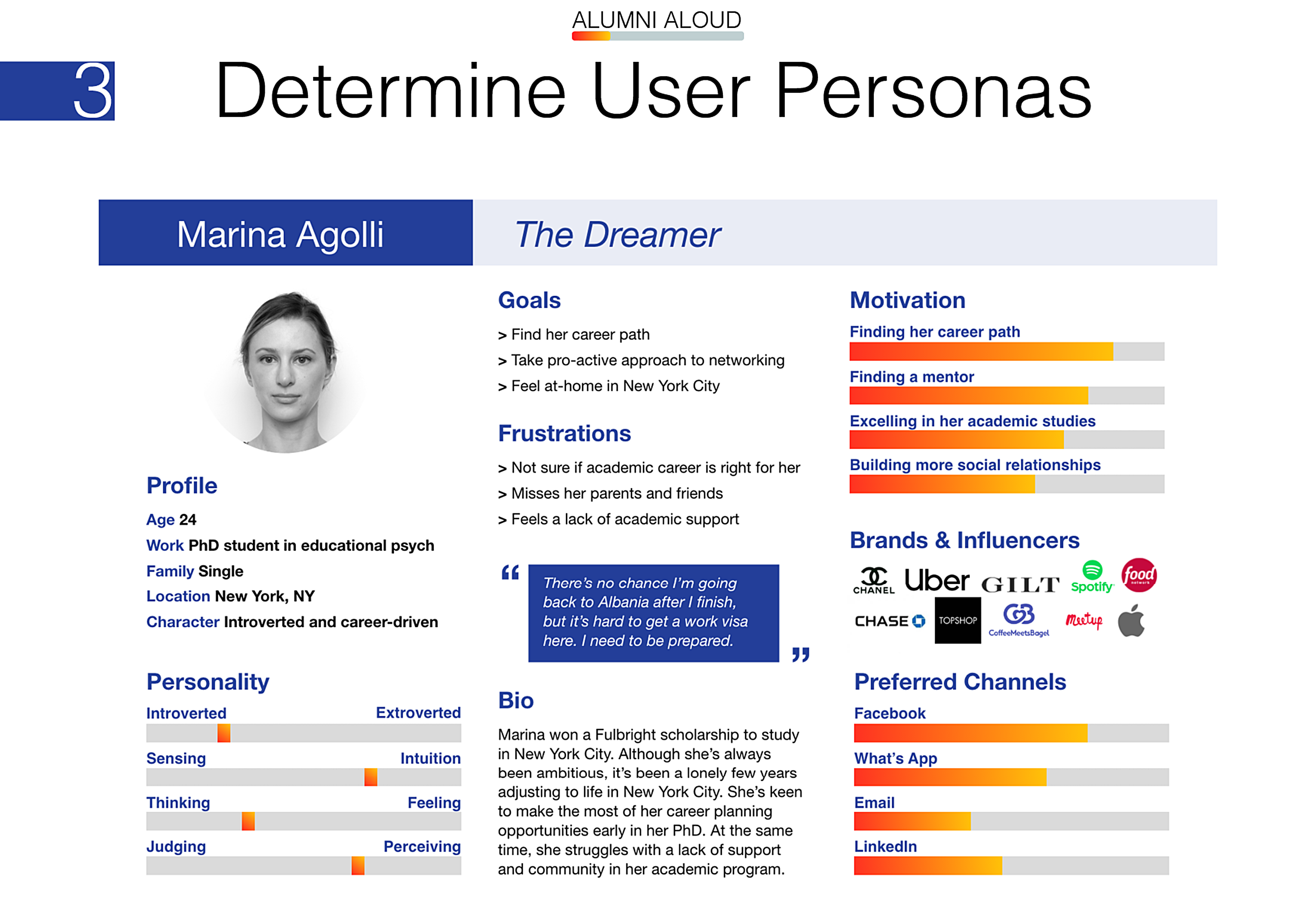
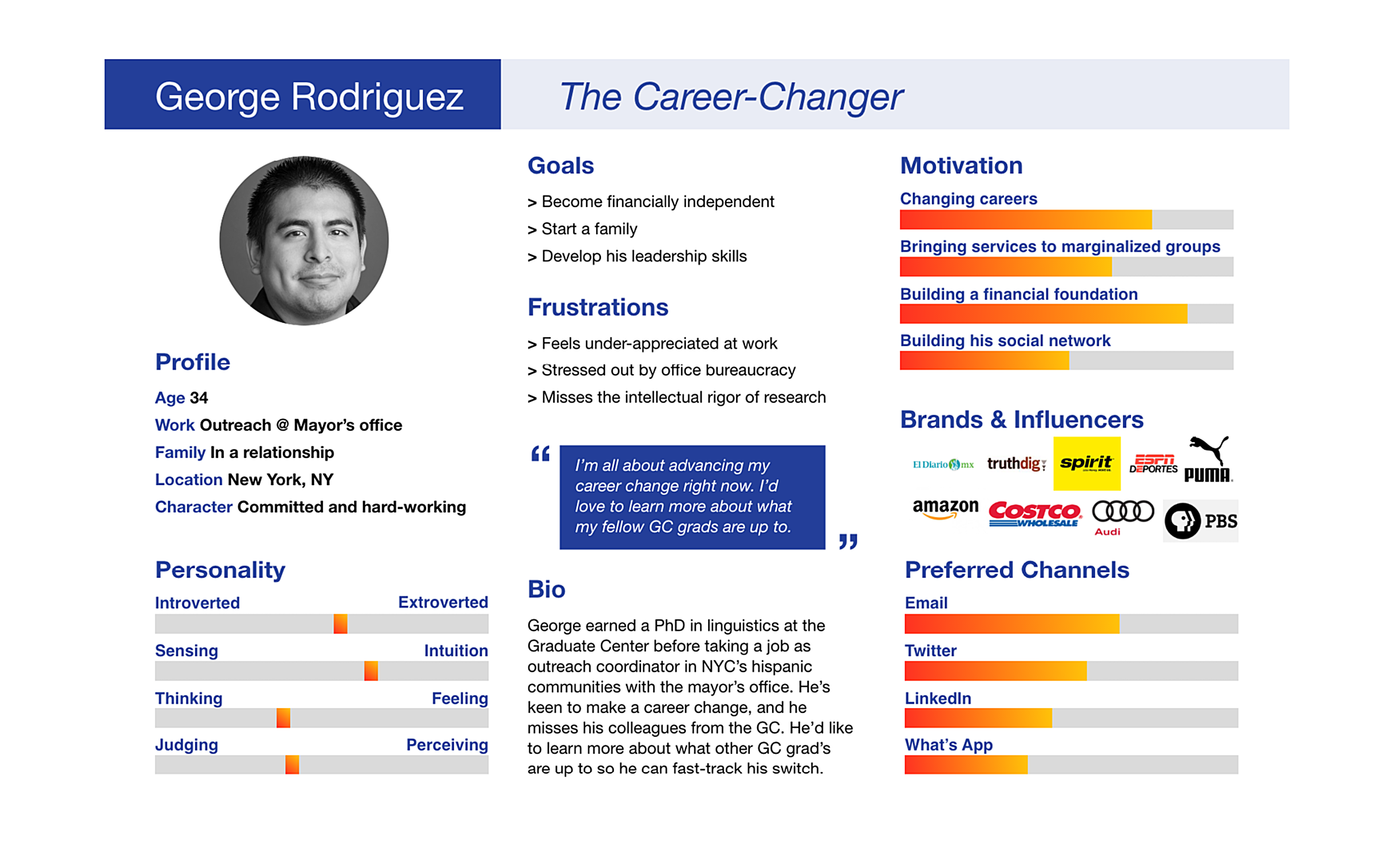
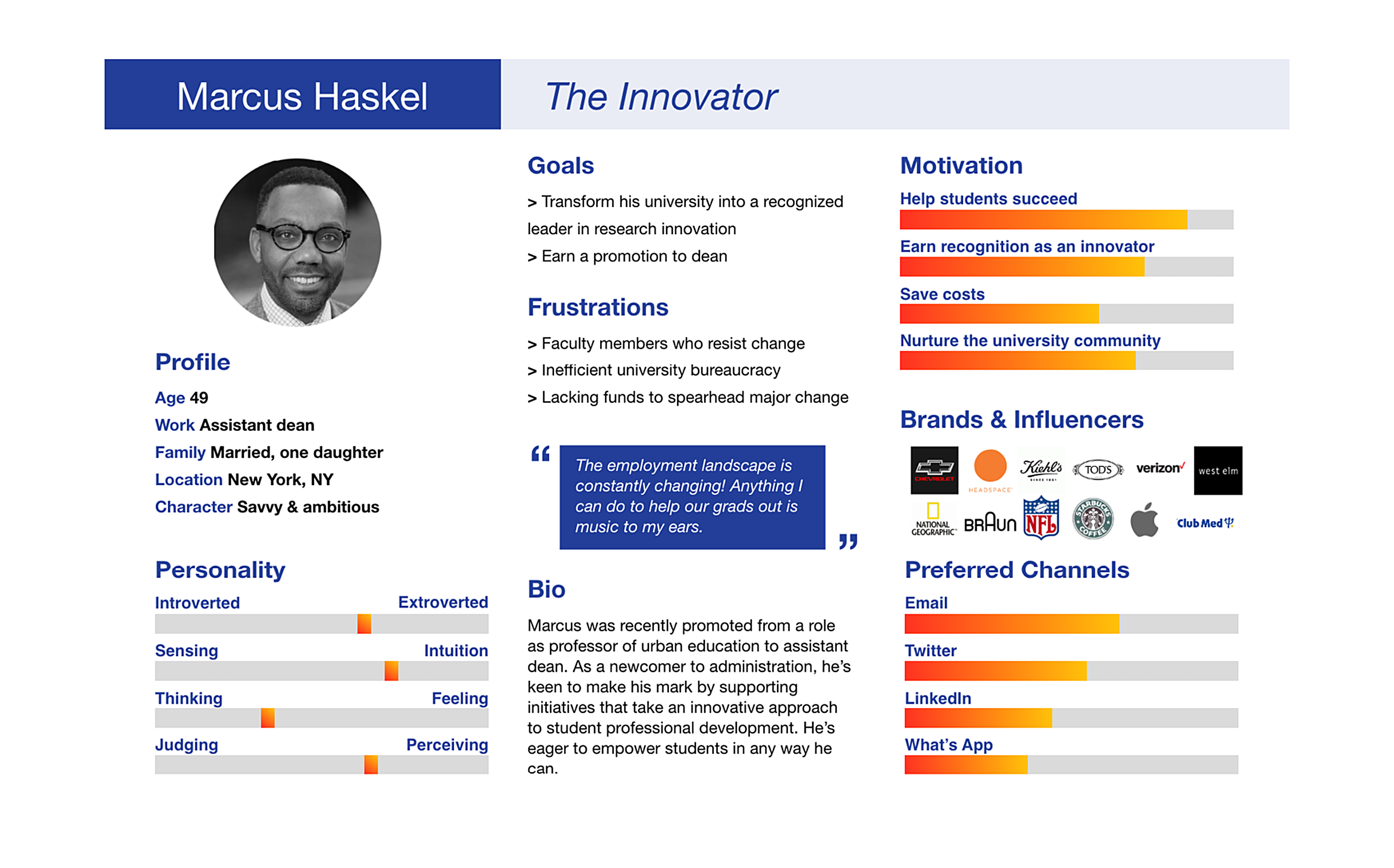

Next, I used the data we collected from our focus gropu to create a set of representative stakeholder personas. These personas helped us align the scope and strategy of our product with the needs of real users.
We need to build something whose scope is broad enough to give students like Marina a view of many different careers, but also detailed enough to know what these jobs are like on a day-to-day basis.
We need something that features alumni of the Graduate Center, people whom alumni like George can reach out to for networking or informational interviews.
We need something that speaks directly to the experience of grdauate students, so administrators like Marcus can get buy-in from their colleagues to start formulating solutions to change their university's programs and requirements.
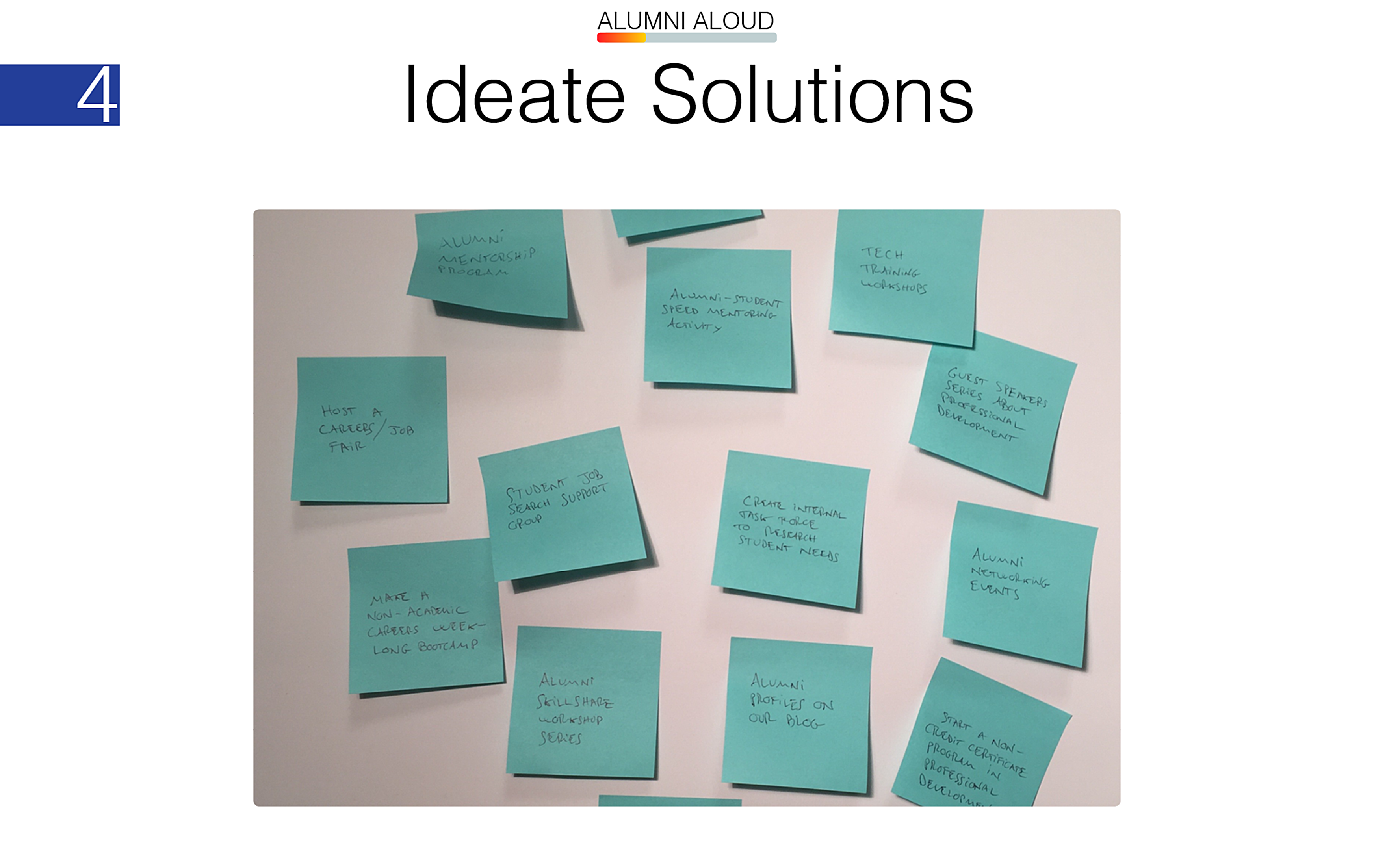
Based on feedback from our focus group and ideation during our brainstorming session, the idea of creating a podcast series profiling alumni in non-academic careers resonated the most with our mission.
It was broad enough to encompass alumni working in many different careers. It was also detailed and contextual enough to be meaningful, because it would focus on specific alumni career journeys in ways that would be relatable to current students’ experiences and prompt self-reflection. Finally, unlike our counseling resources, it can be accessed from anywhere in the world.

We faced two main challenges in building our interview scripts: first, counteracting some interviewees’ anxiety about public speaking and getting them to go deep; second, telling their stories in ways that would be relatable and inspiring to students who have never met them.
We modeled our interview scripts on the “hero’s journey” of narrative development.
Opening questions establish comfort by soliciting empirical, easy-to-answer facts.
Later questions probe deeper into interviewees’ sense of ambivalence or perception of overcoming challenges.
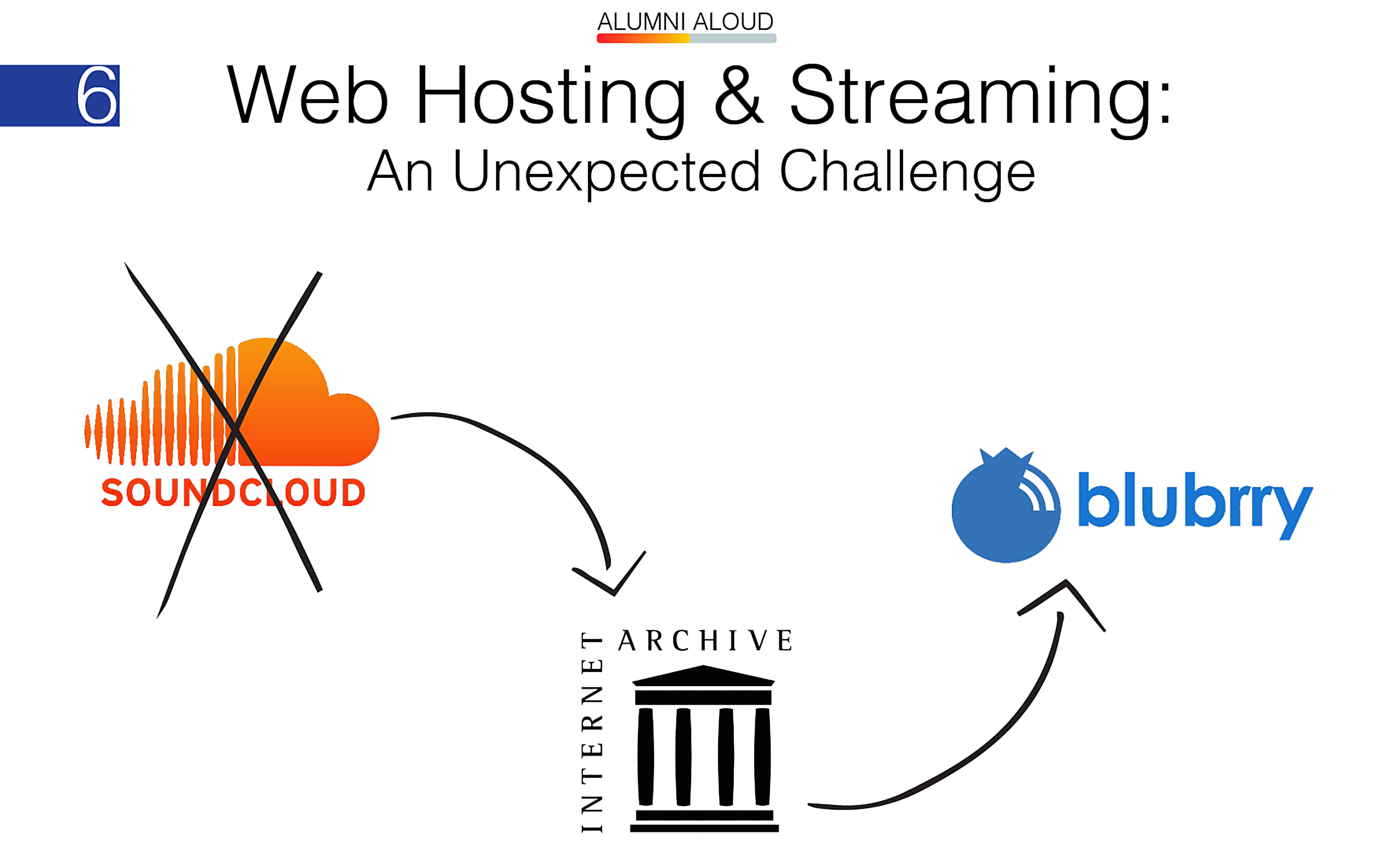
After recording an initial run of five podcast episodes to create a backlog for the season launch, we ran into a problem.
We'd planned to stream our podcast via Soundcloud, but budget cuts and bureaucratic red tape made it impossible for us to requisition a purchasing order to contract a service subscription. We had to find a workaround.
I sat down with my University's chief digital librarian to think through solutions. We ended up with an answer that would be free and sustainable, too. After some research, we decided to host the podcast episodes on Archive.org - a website dedicated to preserving cultural content on the web - and stream each episode via Blubrry, a podcasting plugin for Wordpress. This would allow us to stream each episode to our blog, as well as to iTunes, while backing up each episode offsite as a secure perma-link.
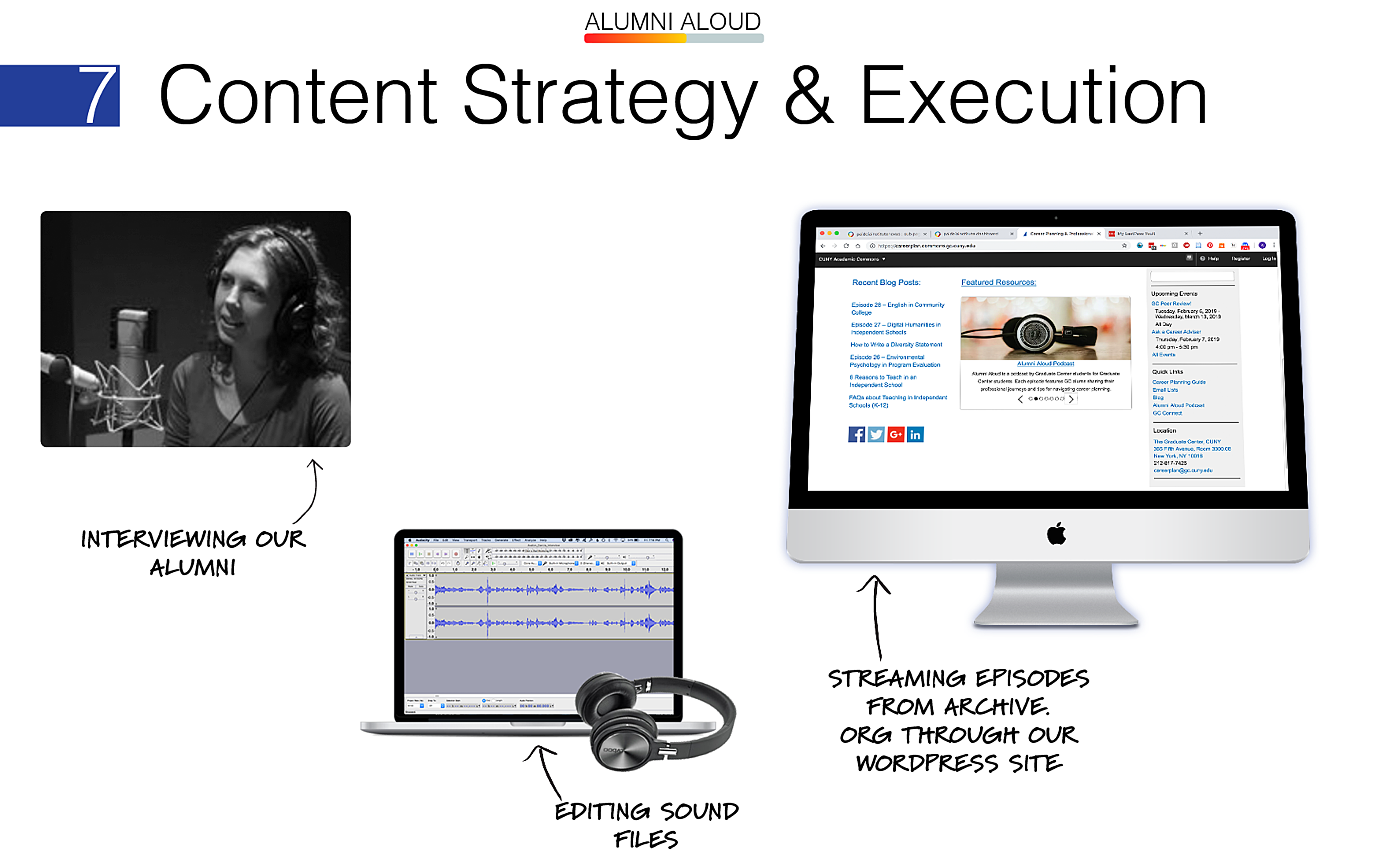
I developed a content strategy to profile a broad range of alumni working in non-academic careers who have graduated in the previous fifteen years.
I sourced interviewees from a database of recent alumni who have graduated from diverse academic departments.
I conducted interviews in my office using specialized recording equipment.
Then, I edited the episode files using Audacity.
I also implemented the web streaming capability that links individual episodes from an offsite server at archive.org through our website (a customized Wordpress CMS). This way, new episodes are securely stored, and we’re able to broadcast them through our blog, social media channels, and Apple Podcasts whenever new episodes are released.
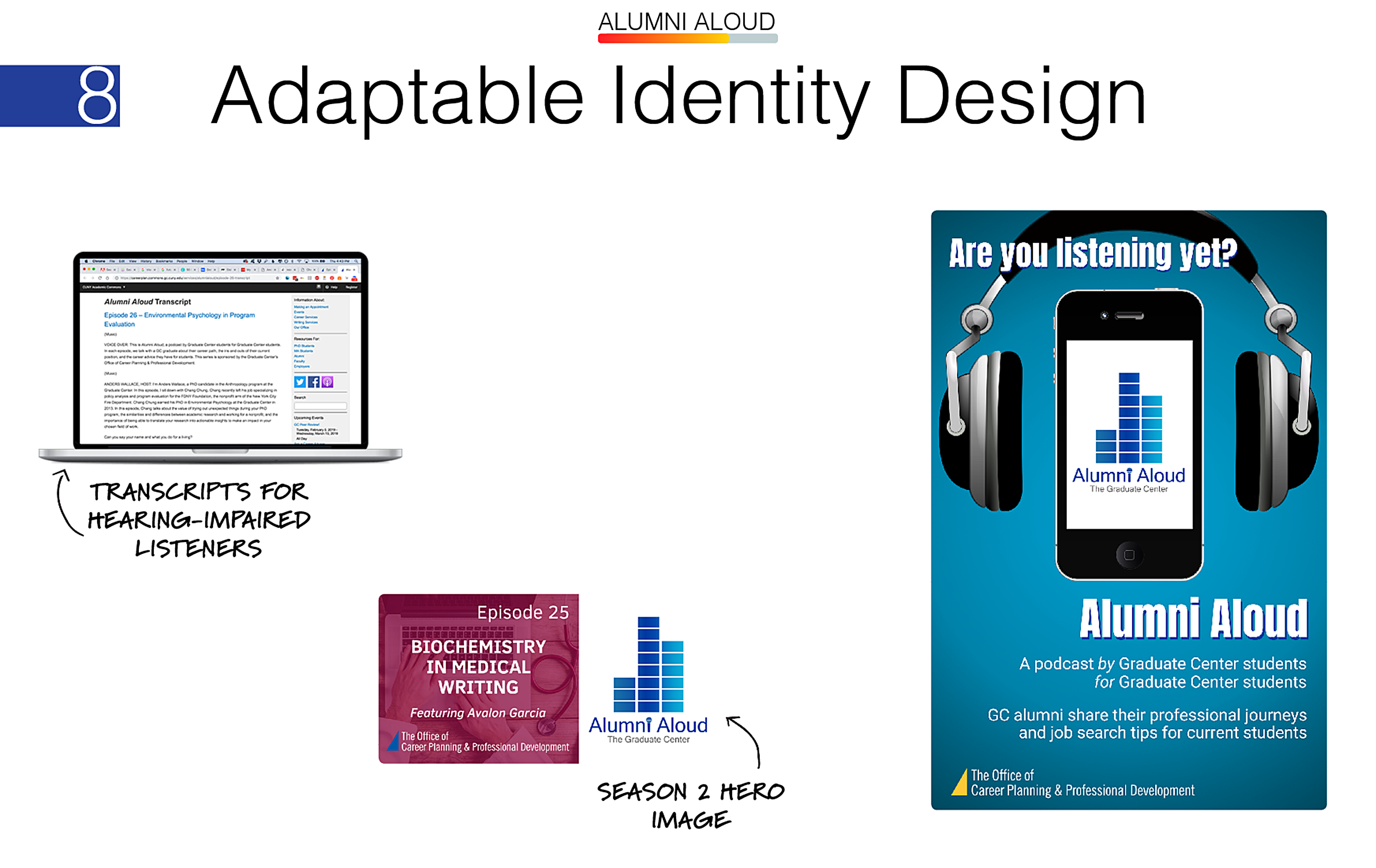

For each recording, I also created show notes to boost our podcast SEO via our blog.
I also proofread episode transcripts and linked these to our show notes as PDF’s, to ensure all episodes are accessible to hearing-impaired listeners.
Before our launch, I teamed up with Joseph (our web developer) and created a holistic brand identity for Alumni Aloud that was contemporary, consistent, and adaptable across different graphic design applications: from blog post headers to promotional posters, Twitter and Facebook posts, icons, and other media.
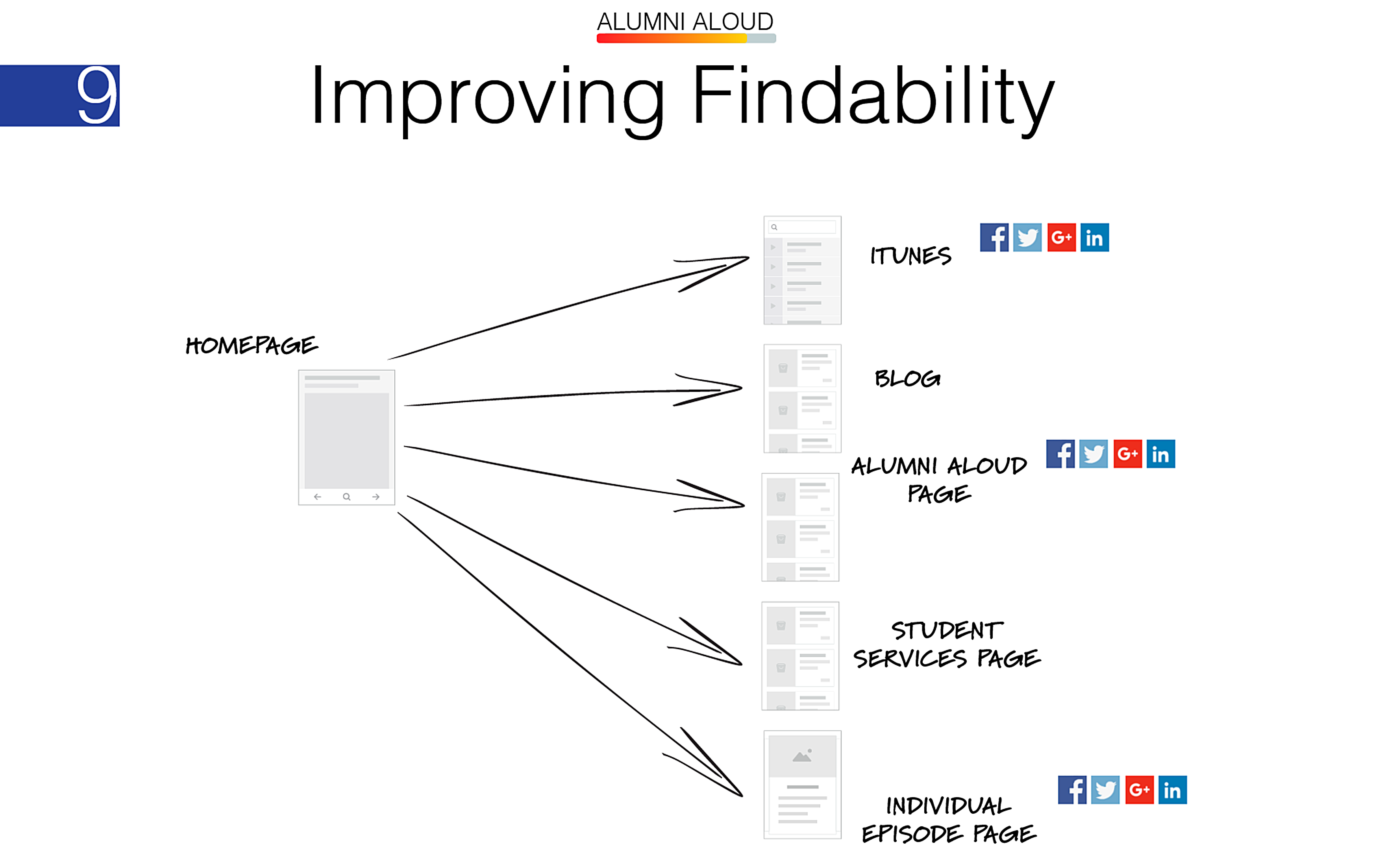
Joseph and I also collaborated to make Alumni Aloud as findable as possible on our website and from the web.
First, we located five access points for users to get Alumni Aloud from our homepage: a “quick links” button, a carousel slider, a link to newly released episodes via our blog, a link via our “Student Services” menu item, and a direct link to iTunes.
Three of these five access points have social media links for users to share or comment on the show.
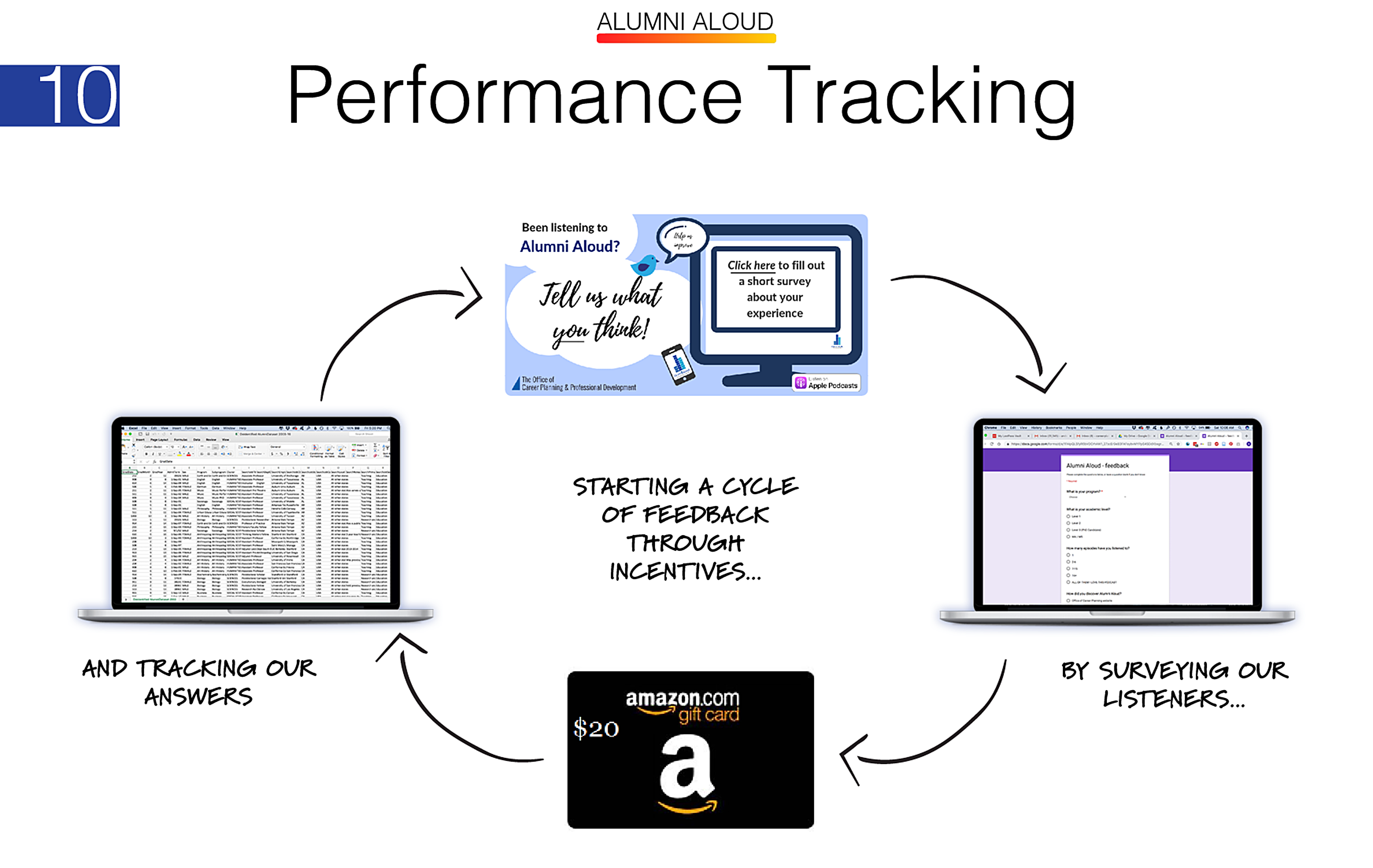
After our first season, I gathered feedback from students using an online survey to gather information about how we could improve their listening experience.
To maximize our feedback from a busy student population, the survey uses a simple questionnaire in Google Forms using likert scales, short responses, and the enticement of entering a raffle to win a $20 Amazon gift card.
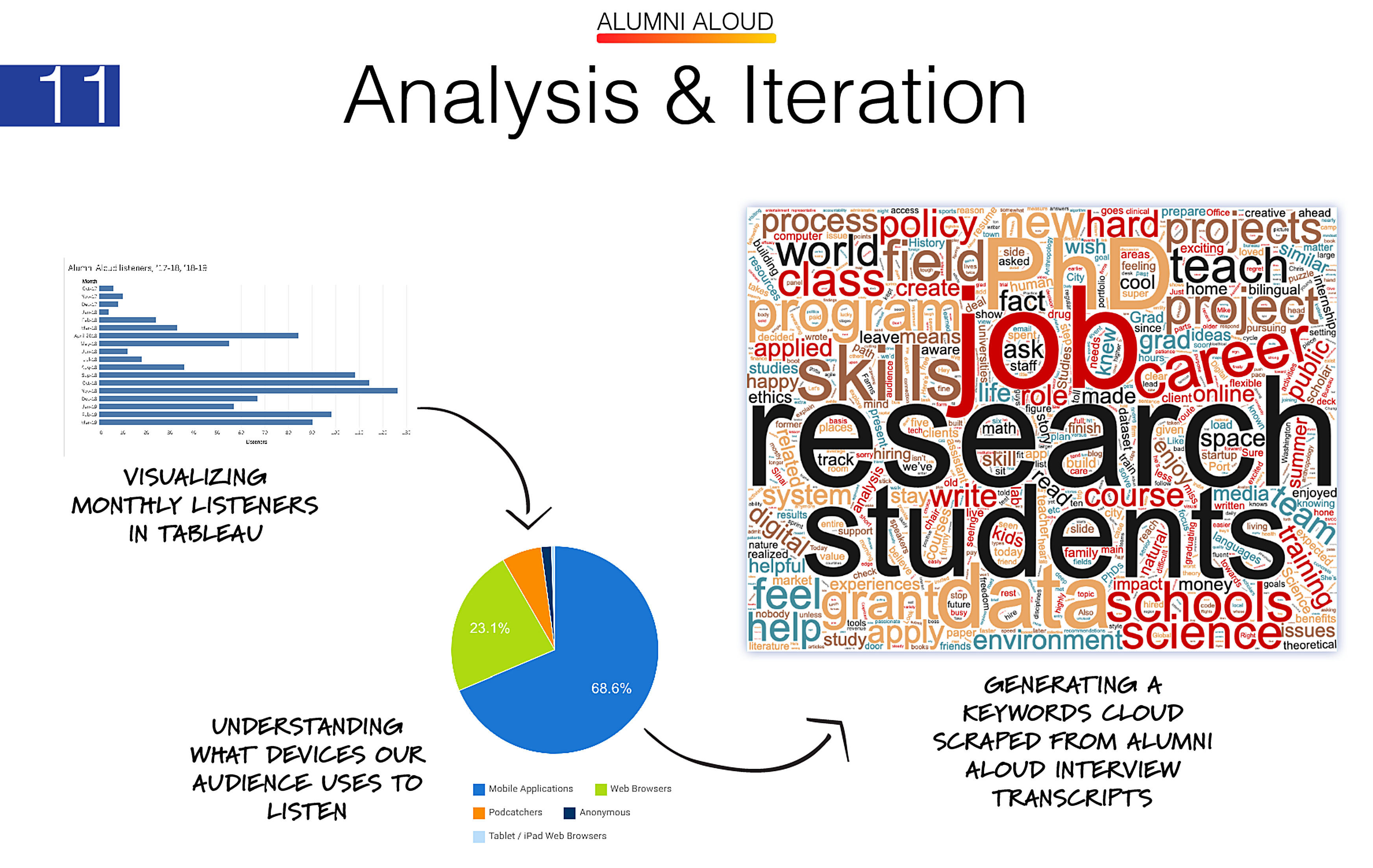
In addition to surveys, we made use of data analytics we received from iTunes as well as our Blubrry Wordpress plugin. This allowed us to understand fine-grained data about where our listeners are tuning in from, what devices they're using, and which episodes they're listening to most.
Together with data collected from surveys, these different data points will be analyzed going forawrd to improve the execution of Alumni Aloud and empower our listeners' journeys into their future careers.
